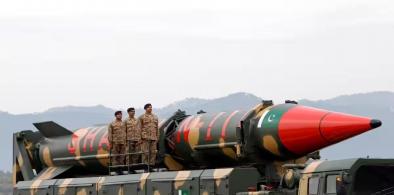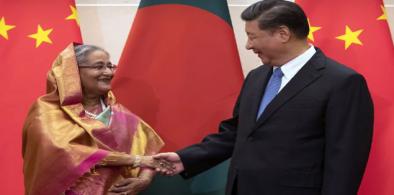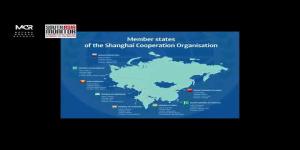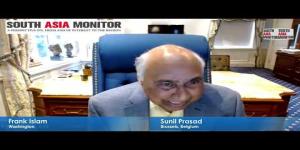Quad does create an overarching arc of stability in the region, checking the expansion capacity of Beijing, which will in turn boost India’s regional ambitions that are mutually aligned with the Quad’s objectives.

Is A India–China War Possible? A Fragile Peace Will More Likely Hold
While low-level clashes may continue, the possibility of a large-scale conflict, as projected by recent U.S. intelligence reports, remains far-fetched. Both countries are acutely aware that they stand to lose far more than they can gain. Despite uneasy relations, several factors actively discourage conflict
China's Reactions To Terror Incidents: State And Social Media Echo Clear Bias For Pakistan
The two incidents in India and Pakistan over the course of a week have shown that the coverage of terrorism by the Chinese media ecosystem largely reinforces the state’s foreign policy narratives and preferences for alignment in South Asia. Pakistan emerges as a clear preference for the public, which is reinforced by commentators and opinion makers on non-state news media platforms.
China’s CPEC Extension To Afghanistan Has Security Implications For Region
CPEC 2.0 is expected to serve as a major leverage tool for China to access Afghanistan’s untapped natural resources and enhance connectivity to Pakistan and Central Asia. However, for Afghanistan, the initiative may be more of a challenge than an opportunity. Countries such as Sri Lanka and the Maldives have already faced severe economic consequences from poorly structured Chinese-funded projects.
China's New Great Game: How Beijing is Redrawing South Asian Geopolitics
China's rise has, in the consensus view of most international relations scholars, fundamentally changed South Asia. The old, India-centric region is gone. Pakistan has tied its future to Beijing, seeing China as its ultimate guarantor. Bangladesh has played a smart game, using Chinese money for national development while maintaining its "friendship-to-all" foreign policy. The Teesta project shows Dhaka's new confidence in following its own national interest. For India, the challenge is immense, as it must now compete for influence in its own backyard.
Modi visits to Brunei, Singapore show India's commitment to Indo Pacific engagement
Modi marked a new chapter in his strategic geopolitical moves over the past few months since the start of his third term with visits to the region and to Ukraine. All these marked a new frontier for India’s power projection while sending a clear message to allies and adversaries that New Delhi has its own bargaining chips in pursuance of its strategic neutrality while ensuring the best returns for its national security and international interests.
With increased militarisation, is a PLA demobilisation possible in Ladakh?
Vacating the Kailash Range without linking it to PLA withdrawal from Depsang-Demchok was a strategic blunder, proving how easily China cons our negotiators. Our political hierarchy wouldn't know how poorly this decision was viewed by our units/soldiers
How China-inspired democratic model empowering Sri Lanka's local communities
Sri Lanka’s TEPES and PEC share many similarities with China’s whole-process democracy. Both nations are working closely to exchange experiences and collaborate on the implementation of these systems in Sri Lanka.
‘Axis of Upheaval’: China, Russia-led coalition threatens West-led global order
First, Russia is engaged in a war that marks Putin's point of no return in his effort to undermine NATO and the West—particularly the U.S.—pursuing a long-term confrontation. To better position Moscow for this conflict, Putin has effectively doubled down on relations with like-minded partners - China, Iran, and North Korea.
US sanctions three Chinese companies for aiding Pakistan’s ballistic missiles programme
China-based Hubei Huachangda Intelligent Equipment Company, Universal Enterprise Limited, and Xi’an Longde Technology Development Company Limited (also known as Lontek) are sanctioned for having “knowingly transferred equipment and technology” to Pakistan, which is not a member of the Missile Technology Control Regime (MTCR) group, Miller said.
China-Bangladesh relations in an uncertain environment: Regional stakeholders need to see cooperative opportunities, not adversarial challenges
The intensification of geopolitical competition in the Bay of Bengal region may affect the healthy interaction between China and Bangladesh. Bangladesh, strategically located at the crossroads of South Asia and Southeast Asia, is a significant factor in the geopolitical and geoeconomic landscape of the Bay of Bengal.
Why China is playing the name game with India on Arunachal Pradesh
The historical manipulation of Tibet's relations with Monyul is a front that China plays against India on the China-India border dispute over the Indo-Tibet border. China has misinterpreted the history of Tibet's relations with Monyul to assert its territorial claim in the region.
India ‘will never be formal ally’ of US but can have ‘strongest’ ties as allies on global stage, says US diplomat
“One of the hardest things to keep in mind is that India is also a great power and it has its own beliefs, its own interests”, he said.
Quad foreign ministers warn of terrorists using new technology, demand action against Pakistan-based terror groups
Recalling the 26/11 Mumbai and the 2016 Pathankot terrorist attacks. they called for “bringing the perpetrators of these attacks to justice without delay”. This explicit mention of terror attacks on India, purported to be engineered from Pakistani soil, is seen as a strong backing by Quad partners of India's stand on cross-border terrorism which New Delhi says is promoted and supported by the Pakistani State.
Can India counter the Chinese challenge in the Indo Pacific?
China's rising military and economic involvement in the region provides India with a strategic challenge to formulate a foreign and security policy blueprint for the Indo-Pacific.
NATO’s 75th Anniversary Summit: Profound implications for Indo-Pacific geopolitics and regional security
The participation of Indo-Pacific partners in the NATO summit epitomizes the breaking of traditional geopolitical barriers, ushering in what is often referred to as "the new geometry" of international relations.
Beijing’s hold on Nepal will have long-term implications for India
India introduced the Agnipath system of recruitment in its military, denying regular recruitment to thousands of Nepalese Gurkhas into the Indian Army, not only aggravating unemployment in Nepal, but more importantly, shattering the strong bond between the Indian and Nepalese armies.
Dalai Lama in the US: Opportunity for Biden in election year to make a statement to China as India watches
From the Indian standpoint Prime Minister Modi may like to keep the Tibetan issue on the foreign policy agenda of his third term while dealing with a recalcitrant China. Its particular reference to the Tibetan issue remaining unresolved in accordance with international law may provide some opening to New Delhi to work on given the historical sensitivities of India's border dispute with China.
Restoring historical names in Tibet: Can India really show the mirror to China?
If NDA 3.0 wanted to show assertiveness to China, why were representatives of the Central Tibet Administration not invited for the osth-taking ceremony at Rashtrapati Bhavan on June 9, as they were invited in 2014 for the swearing-in of the then new NDA government.

























